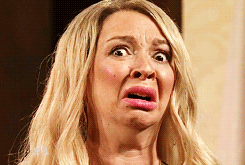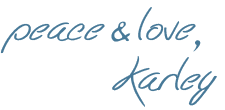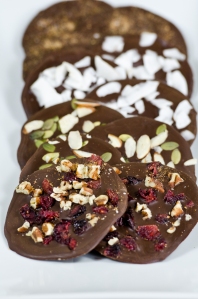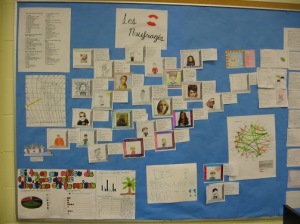We are very excited and honoured to have Nikki Lineham guest post for us today. Nikki is a brilliant and masterful teacher in our school district; she specializes in teaching math using pictorial, symbolic and concrete methods, while keeping the learning process creative and engaging for both students and teachers. Meaghan and I have worked with Nikki in various Pro D sessions and we have also both used Nikki’s math resources (available through her website Educating Now) in our respective classrooms. Thank you, Nikki, for sharing your knowledge and passion for teaching math with us here on Tale of Two Teachers! We hope all our readers enjoy Nikki’s post.
Firstly, I want to thank Meaghan and Karley for inviting me to be a guest blogger for Tale of Two Teachers; I’m honoured, as I have a boatload of respect for these two dedicated teachers and I love reading their posts and empathizing with their journeys. Although I’ve been teaching for 15 years, I still feel like I have so much to learn and try. This is one of the reasons why I love my job so much; I have the opportunity to try out new strategies and approaches that I read about. Not only that, but because I work with several teachers, I can try out these ideas in many classrooms, using trial and error to make the lessons so much better. Rarely do I ‘nail it’ on the first try, and having the opportunity to refine multiple times each week (sometimes even in one day) allows me the chance to share what I know really works with other educators. This is the approach I took when learning how to set up and use collaborative math teams in math classes. Trust me, there was a whole lot of trial and error before we figured out the recipe for success.
The reason that I’m so passionate about these math teams is that I saw, first hand, in multiple classrooms, how powerful of an impact they had on both teachers and students; teachers were so inspired by the level of student engagement and learning and they had time to better assess and meet the needs of their students during class time and they felt less exhausted after lessons. I also feel very strongly that we ought to be focusing more on competencies (as we see in our new curriculum) rather than solely on the content, as we have been conditioned to do. When students are in these teams, the roles are assigned (based on Complex Instruction) and criteria co-created, students become deep thinkers, collaborators and excellent communicators. Here are some of my observations from the classes I had the privilege of working in.
In a grade 6 class, I was blown away by the questions that the students started asking after a few weeks of working in teams. Because of all the work we did around creating growth mindsets and developing criteria around the competencies, students changed from ‘doing’ math to thinking about math (they were also still doing math). They started asking questions like, “When does infinity start?” and, “Are there such things as negative fractions and decimals?”. Students became curious and excited about learning how the math worked and how numbers were connected. One lesson, when we didn’t give the students any methods for multiplying decimals, but rather asked them to make predictions and explore in their teams what it means to multiply decimals, they were literally begging us to teach them the method (how often does that happen?!).
In a grade 8 class, after about two months of working in teams, when we moved into learning about rates and ratios, we literally didn’t have to teach a single method of solving. Students used their math reasoning, communicating and conceptual understanding to solve rates problems based on what made sense in the given contexts; the students could clearly explain their procedures. This proved to me, once again, that if students have conceptual understanding they can develop procedures, conversely, if students have memorized procedures (without really understanding them) and then they forget the procedure or rule (which happens all the time), they have nowhere to go. When students get stuck like this the learning stops and they become entirely dependent on you, or someone else, to show them the procedure again. To be honest, we gave them the problem on rates as a way to prime their brains for learning the procedure, not expecting them to actually solve them without learning the procedure. Yet again, my expectations were surpassed.
After watching in amazement how these teams transformed students into mathematicians, I wondered, ‘Why on earth aren’t we all doing this?’. One thing I realized is that, generally speaking, teachers tend to be control freaks and giving up control to allow students to struggle and problem solve on their own is a tough transition (but so worth it). Teachers are also incredibly busy with the gazillion other tasks during their days and it’s challenging to find time to frequently read articles and books. I did read a few articles and books on how to use these teams and still had a lot of trial and error, so it wasn’t a quick and easy change to make. This is why I spent my summer creating a course on how to use these math teams so that it can be easily done by any teacher. If you are interested in learning more, please join me for a free webinar that will give an overview of how to use the math teams and if you really want to dive in, then sign up for our 12 part course that provides detailed day by day support on how to set up and use these teams in your classroom. We have a number of teachers signed up and taking this course already and are offering you an opportunity to sign up at a 25% discount (use code: TALEOFTWO). Course registration closes at the end of September.
Cheers!
Nikki Lineham




























